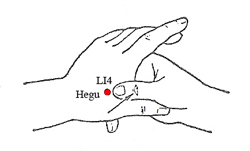 Swelling is not a strange term to many women. Even women without pregnancy are familiar with swelling that can occur during pregnancy. Fingers, feet, ankles or legs can swell and become uncomfortable when you are pregnant. What many women do not realize is that you can continue to swell after your pregnancy. These effects can last as long as a week after you have delivered your baby.
Swelling is not a strange term to many women. Even women without pregnancy are familiar with swelling that can occur during pregnancy. Fingers, feet, ankles or legs can swell and become uncomfortable when you are pregnant. What many women do not realize is that you can continue to swell after your pregnancy. These effects can last as long as a week after you have delivered your baby.
Causes of Swelling After Pregnancy
1. Body Changes During Pregnancy
During pregnancy the body produces high levels of progesterone which causes sodium and water retention. As the uterus expands to accommodate the baby, pressure will also be exerted on the veins to legs, which restricts blood flow to the lower body. As fluids build up through pregnancy, it takes some time to reduce the fluids, even after the pregnancy.
2. The Delivery Process
In addition to the natural pressure which causes swelling during pregnancy, the process of pushing which is necessary for a vaginal birth will send excess amounts of blood and other fluids into the extremities. This can cause swelling in hands, feet, legs or even the face.
3. Influence of the IV Fluids
New mothers who used an IV to get fluids during delivery can expect general swelling after pregnancy. Women experiencing a C-section will usually receive medications or anesthesia through an IV, while women giving birth vaginally will only be given medications such as Pitocin and some fluids. These excess fluids can lead to excess liquid in the body which could take several days for the body to shed.
Is Swelling After Pregnancy Serious?
Swollen ankles or joints after pregnancy are not usually a sign of a serious condition, but if the symptoms last longer than 4 weeks, you’d better talk with your doctor. For those that have heart problems or hypertension, check with your doctor if you experience any swelling. Besides, it is particularly vital if the swelling is accompanied by chest pains, dizziness or headaches. If these occur, seek medical help immediately.
Remedies to Ease Swelling After Pregnancy
1. Keep a Healthy Diet
Eating a proper diet can give you the energy you need after pregnancy and help you shed excess fluids. Food like fresh fruits and vegetables, complex carbs or protein rich foods are helpful. Avoid processed foods since they tend to be high in sodium which can increase bloat.
2. Elevate Your Feet and Hands
Keeping your hands and feet in an elevated position will usually help to reduce swelling. Try to rest with your feet propping up for half an hour each day to ease swelling. Hands and feet that are swollen should be kept above the heartto allow the blood flowing properly to these areas.
3. Drink Lots of Water
It seems strange to drink lots of fluids to help alleviate swelling. However, drinking plenty of fluids does help the body release the excess fluid stored in your body. Your body has been deprived of water during birth and will continue to lose fluids during breastfeeding, so you should try to drink plenty of fluids throughout the day. You are supposed to drink as enough as to naturally empty your bladder every 4-6 hours. Getting at least 8 glasses of water each day will help your body release excess fluid by keeping the body at a comfortable hydration level.
4. Do Some Moderate Exercises
Mild exercise can help to reduce edema. Women with enough energy can perform water aerobics as a way of gently soothing uncomfortable swollen joints. If this is too strenuous, yoga or a light walk at home can be helpful, too.
5. Try Some Massage
Massaging the ankles can improve circulation to the legs so fluid will drain more easily. Here is a video illustrating some massage skills for women both in pregnancy and after pregnancy:
What About Incision Swelling After Pregnancy?
General swelling is uncomfortable, but swelling around a C-section incision can be painful and make it harder for you to care for your baby. It is normal to find excess swelling or bruising around the perineum after experiencing vaginal tearing or an episiotomy.
Placing an ice pack around the perineum or C-section incision site can help to reduce swelling. A warm bath can also help to reduce discomfort. Your doctor also provides you with instructions for how to keep these areas clean. Do not use vitamin E or lotion in these areas until your doctor says these areas have adequately healed.






